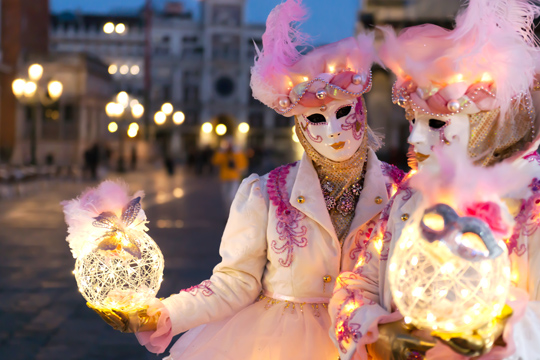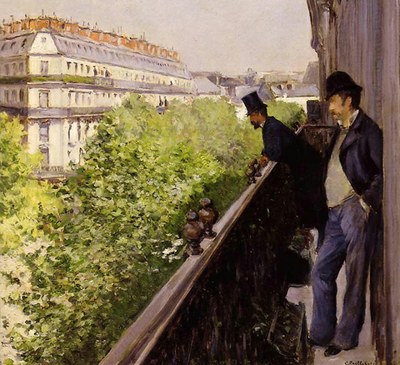Idle Thoughts
Freiburg, Apr 09, 2019
Most of us lack it, many of us still long for it in these fast-paced times – but even in more tranquil days, leisure was a rare thing, in major cities at least. What was Johann Wolfgang von Goethe’s experience of hectic everyday life in Italy or other German authors’ in Paris or London? How did they relax there? Questions like this drive the German literature scholars Prof. Dr. Peter Philipp Riedl and René Waßmer from the SFB “Muße. Grenzen, Raumzeitlichkeit, Praktiken”, aka the “Leisure. Boundaries, Time & Space, Methods” special research area at the University of Freiburg.

Johann Wolfgang von Goethe enthusiastically described the carnival in Italy – observing the motley goings-on was one form of idling. Photo: phokrates/stock.adobe.com
Can you take a tortoise for a walk on a lead? According to Walter Benjamin this eccentric form of promenading was high class in Paris around 1840. And if the literature scholar and philosopher was spinning a yarn, it was an ingenious one: the tall tale hints at the desire to slow down in a world driven by a hectic and restless hustle and bustle – and indirectly at the human need for leisure.
The Freiburg professor of German literature, Peter Philipp Riedl, believes this need arose at the same time as work ceased to be simply a means of ensuring survival and became a way of forming an identity and self-discovery. Riedl’s project in the special research area takes leisure in literature as its focus. It covers two specific areas. Riedl studies forms of urban perception and leisure in Goethe’s Italian Journey, as well as his “Roman Elegies” and “Venetian Epigrams”. His PhD student René Waßmer analyzes German travel journals and correspondents’ reports from London and Paris between 1770 and 1830. So what, essentially, is new about their project? The figure of the “flaneur” – the idler par excellence – generally appeared in literature from the middle part of the 19th century. However Riedl and Waßmer have found that the flaneur had already occurred in literature some decades earlier: around 1800.
Two concepts of liberty
The SFB defines leisure as productive unproductivity. This idea is based on the philosopher Isaiah Berlin’s two concepts of liberty. In this, leisure is firstly freedom from something – perhaps from work directed by others, or from social constraints. At the same time it is also freedom for something: for unconstrained activity, which often serves as self-discovery. According to Riedl and Waßmer, the flaneur in the end also finds himself through a rambling “self-emptying” in his environment: observing at leisure also changes the observer, their perception of what they observe, as much as their self-perception.
“‘Flaneuring’ is strolling in an urban space,” Riedl explains. In the aforementioned works by Goethe, Riedl finds all three types of the flaneur, as identified in a French encyclopedia from 1867: the “flâneur lettré”, who favors hanging round in bookshops; Goethe himself, as an enthusiastic theater-goer and observer of the Roman carnival, became a “flâneur des parades”, and his love of public gardens also made him a “flâneur des jardins publics”.

Idlers at ease: French painter Gustave Caillebotte shows two observers on a balcony in Paris around 1880. Source: Wikimedia Commons
Looking at the flaneur, Riedl and Waßmer speak of a “double perception of others”: on the one hand, travelers to Paris and London such as Ernst Moritz Arndt, Georg Friedrich Rebmann and Hermann Fürst von Pückler-Muskau, or Goethe as a visitor to Italy, experienced foreign customs and ways of life during their time in these cities. On the other, they lived in cities larger than any in Germany at that time. Amongst other places, during his visit to Italy Goethe visited Naples – in his day, the third-largest European city after London and Paris. In contrast to the “backwards” German empire, Waßmer says, correspondents who reported for Friedrich Justins Bertuchs’ journal “London and Paris” experienced stays in those two great cities as “journeying into the future”.
Strollers and loungers
While Benjamin’s term essentially describes the flaneur as a social type, Riedl and Waßmer prefer a definition of idling that ignores social background and inclusion. “We are interested in forms of idling in the sense of perception and interpreting it in narrative,” explains Riedl. He has observed that the two very different perspectives are mixed up and confused with one another in research, even today. Idling in a formal sense is absolutely not linked to movement. As an example, Waßmer cites correspondents’ reports from Paris which differentiate between strollers and loungers among the visitors to a park. With the latter, the eyes to a certain extent do the strolling. As a simultaneously observant and relaxed interaction with the environment, idling is in any case a more intellectual than physical activity.
To idle is creative
So when and where does the professor himself idle? Peter Philipp Riedl thinks briefly, then refers to the philosopher Christian Garve. In his book “Über Gesellschaft und Einsamkeit” from 1800 he mentions a walk through St. Mark’s Square in Venice. Idling in the anonymity of the crowd, Riedl says, brought Garve his best ideas. Riedl feels likewise when jogging. Movement and relaxation, the changing impressions and rambling thoughts: for Riedl, this fits the classical definition of idling, “an open mind, the possibility of letting one’s thoughts drift, can also become a creative process.” And thinking about the credo of the University of Freiburg – “Connecting Creative Minds” – he adds, “Flaneurs are at least potential creative minds.”
Hans-Dieter Fronz

